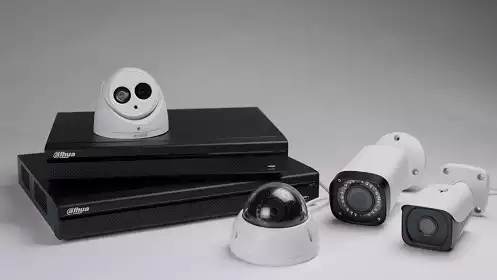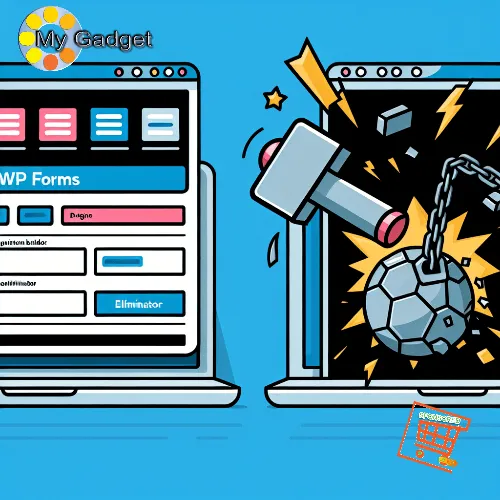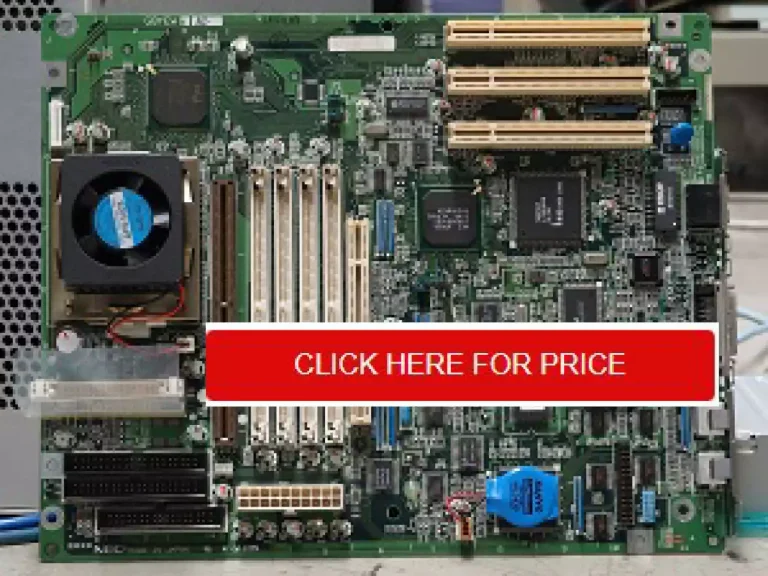Advantages of HDCVI Cameras
In an era where security and surveillance are paramount, the choice of technology can significantly influence the effectiveness of monitoring systems.
High Definition Composite Video Interface (HDCVI) cameras have emerged as a compelling option for both residential and commercial security applications.
Combining the high-resolution capabilities of modern digital cameras with the simplicity of traditional analog systems, HDCVI technology offers a unique blend of benefits that cater to diverse security needs.
With the ability to transmit high-definition video over coaxial cables, HDCVI cameras facilitate seamless upgrades from legacy systems without the need for extensive rewiring, thus providing a cost-effective solution for enhancing security infrastructure.
Furthermore, their ease of installation and compatibility with existing surveillance setups make them an attractive choice for property owners looking to bolster their security without incurring significant disruptions.
Additionally, HDCVI cameras support various functionalities, such as long-distance transmission, real-time monitoring, and advanced features like motion detection and analytics.
This article delves into the numerous advantages of HDCVI cameras, highlighting their role in modern security systems and the value they offer in safeguarding assets and ensuring peace of mind.
Table of Contents Advantages of HDCVI Cameras
High-definition video quality enhances surveillance clarity
The implementation of high-definition video technology in surveillance systems significantly improves the clarity and detail captured in footage, enabling more effective monitoring and analysis.
With higher resolution images, operators can discern critical features such as facial characteristics, license plate numbers, and other identifying details that are essential for security assessments and incident investigations.
This enhanced visibility not only aids in real-time decision-making but also serves as vital evidence in legal proceedings.
Moreover, the increased pixel density in high-definition video facilitates better performance in varying lighting conditions, contributing to a more reliable surveillance solution.
Advanced compression algorithms further optimize bandwidth usage while maintaining image integrity, allowing for longer recording times without loss of quality.
This combination of improved resolution and efficient data handling ensures that security personnel can maintain a comprehensive overview of monitored areas, ultimately bolstering the effectiveness of surveillance operations.
Cost-effective solution for video monitoring
systems remain within budget constraints while delivering high-quality results.
By leveraging existing coaxial cabling, businesses can avoid the high costs associated with the installation of new infrastructure typically required for IP cameras.
This adaptability to current systems not only reduces upfront expenditures but also minimizes downtime during the transition, allowing organizations to maintain uninterrupted surveillance.
Additionally, these solutions often come equipped with user-friendly interfaces and simplified installation processes.
This ease of use translates to lower labor costs and reduced training requirements for staff, further enhancing the overall cost-effectiveness.
As a result, organizations seeking robust surveillance capabilities without the financial burden can achieve their security goals efficiently and effectively, making it a prudent choice for various applications.
Simplified installation reduces labor costs
The streamlined installation process associated with these surveillance systems significantly lowers the labor costs involved in deployment.
By minimizing the complexity of setup, technicians can complete installations in much less time compared to traditional systems that require extensive wiring and configuration.
This efficiency not only reduces the number of hours billed by service providers but also allows businesses to allocate resources more effectively, ensuring that personnel can focus on other critical operations.
Moreover, the straightforward nature of the installation enables less specialized staff to participate in the setup process, further decreasing reliance on highly skilled labor.
This accessibility fosters a more versatile workforce, as team members can quickly adapt to new technology without extensive training.
In turn, organizations benefit from a more agile approach to security implementation, resulting in faster project completion and a stronger return on investment.
Long-distance transmission without signal loss
The ability to transmit high-definition video over long distances without degradation is a pivotal feature in contemporary surveillance systems.
Employing advanced transmission technologies ensures that video signals remain intact and clear, even when extended across significant distances.
This capability is crucial for large facilities, campuses, or urban environments where cameras may be placed far from their recording or monitoring stations.
Maintaining the integrity of video data is essential for effective surveillance, as it allows for accurate identification and assessment of incidents without the risk of pixelation or signal interference.
Furthermore, this robust long-distance transmission not only enhances the reliability of security systems but also reduces the need for additional signal boosters or repeaters, which can complicate installation and increase costs.
By ensuring that high-quality video can be relayed over substantial distances through a single cable run, organizations can achieve a more streamlined infrastructure.
This reduction in equipment also minimizes potential points of failure, resulting in a more resilient and dependable security solution that can adapt to various operational demands.
Compatible with existing coaxial cabling infrastructure
The use of existing coaxial cabling infrastructure significantly streamlines the upgrade process for surveillance systems, allowing organizations to enhance their video security capabilities without the need for extensive rewiring.
This compatibility means that facilities can leverage their current wiring, reducing installation time and minimizing disruption to operations.
By integrating high-definition surveillance technology into an established framework, businesses can achieve improved image clarity and detail without incurring the expenses associated with installing new cabling.
Moreover, this adaptability enables a cost-effective transition to high-definition surveillance solutions, as it eliminates the need for major infrastructure overhauls.
Organizations can implement advanced video technologies while capitalizing on their previous investments in coaxial cabling.
This not only maximizes resource efficiency but also supports a gradual upgrade path, allowing for better budgeting and planning in security system enhancements.
Real-time monitoring improves security response
The implementation of advanced monitoring systems enhances the ability to respond to security incidents as they occur.
By leveraging real-time data feeds, security personnel can assess situations immediately, enabling a swift reaction to potential threats.
This proactive approach allows for timely interventions, which can mitigate risks and minimize potential damage.
Furthermore, continuous surveillance ensures that any suspicious activities are identified and addressed promptly, fostering a safer environment for both personnel and assets.
The capability to monitor activities in real-time also facilitates better decision-making during critical situations.
With immediate access to high-definition video, security teams can evaluate incidents in context, leading to more informed and effective responses.
This level of responsiveness not only bolsters overall security measures but also instills greater confidence in employees and stakeholders, knowing that their safety is being continuously prioritized through cutting-edge surveillance technology.
Versatile applications for residential and commercial use
offers numerous opportunities for implementation across various settings.
In residential spaces, these systems can enhance home security by providing seamless monitoring of entry points and surrounding areas, ensuring peace of mind for homeowners.
Additionally, the integration of such technology in commercial environments allows businesses to oversee extensive properties and manage multiple locations with ease, significantly improving operational efficiency.
Furthermore, the scalability of these systems makes them suitable for diverse applications, from small retail stores to large corporate offices.
Whether it’s for protecting valuable assets, monitoring employee interactions, or ensuring compliance with safety regulations, these advanced monitoring systems cater to a wide array of needs.
By adapting to the specific requirements of each environment, they play a crucial role in creating secure and efficient spaces that promote both productivity and safety.
Robust construction ensures durability and longevity
The quality of materials and engineering involved in these systems significantly contributes to their overall lifespan.
Built to withstand various environmental conditions, HDCVI cameras are often designed with rugged casings and weather-resistant components that minimize the risk of damage from external factors such as moisture, dust, and temperature fluctuations.
This durability not only reduces the need for frequent repairs or replacements but also ensures that the cameras maintain optimal functionality over time, providing consistent performance in critical security applications.
In addition to physical resilience, the technological aspects of HDCVI cameras are engineered for longevity.
With features such as advanced image processing and low-power consumption, these systems can operate efficiently while delivering high-quality video feeds.
This combination of robust construction and cutting-edge technology underscores a commitment to long-term reliability, making HDCVI cameras a valuable investment for any security infrastructure.
Advanced features include motion detection alerts
The integration of motion detection alerts enhances the operational efficiency of HDCVI cameras, allowing for immediate responses to potential security breaches.
This feature employs sophisticated algorithms to analyze video feeds in real-time, identifying movement patterns and distinguishing between regular activity and unusual behavior.
When motion is detected, the system promptly notifies users through various channels such as email or mobile notifications, ensuring that critical events are not overlooked.
Furthermore, the customizable nature of these alerts allows users to fine-tune sensitivity settings and specify detection zones, reducing false alarms triggered by non-threatening movements like animals or weather changes.
This level of precision ensures that security personnel can focus their attention on genuine threats, facilitating quicker decision-making and response times.
As a result, the integration of motion detection not only bolsters security measures but also enhances the overall management of surveillance operations.
User-friendly interface simplifies system management
A well-designed interface plays a pivotal role in streamlining the management of HDCVI camera systems, allowing users to navigate and operate functionalities with ease.
By presenting clear, intuitive controls and organized layouts, users can quickly access essential features such as live feeds, recording schedules, and playback options without extensive training.
This efficiency is particularly beneficial for security teams, enabling them to monitor, configure, and respond to incidents promptly, thus enhancing overall situational awareness.
The simplicity of the interface also extends to system maintenance tasks, such as firmware updates and configuration adjustments, which can often be cumbersome in more complex systems.
With user-friendly navigation and straightforward prompts, users can perform these tasks with minimal disruption to their workflow.
This eliminates the frustration associated with complicated setups, allowing organizations to focus on their core operations and optimize their security measures effectively.
In conclusion, HDCVI cameras offer a compelling solution for those seeking high-definition video surveillance without the complexities often associated with modern security systems.
Their ability to transmit HD video over existing coaxial cabling simplifies upgrades, making them both cost-effective and efficient for various installations.
Additionally, features like real-time transmission and long-distance capability enhance their appeal for both residential and commercial applications.
As security demands continue to evolve, HDCVI technology stands out as a practical and reliable choice, providing users with the clarity and performance necessary to safeguard their assets effectively.








